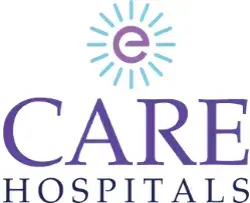-
Doctors
-
Specialities & Treatments
Centre of Excellence
Specialties
Treatments and Procedures
Hospitals & Directions HyderabadCARE Hospitals, Banjara Hills CARE Outpatient Centre, Banjara Hills CARE Hospitals, HITEC City CARE Hospitals, Nampally Gurunanak CARE Hospitals, Musheerabad CARE Hospitals Outpatient Centre, HITEC City CARE Hospitals, Malakpet
HyderabadCARE Hospitals, Banjara Hills CARE Outpatient Centre, Banjara Hills CARE Hospitals, HITEC City CARE Hospitals, Nampally Gurunanak CARE Hospitals, Musheerabad CARE Hospitals Outpatient Centre, HITEC City CARE Hospitals, Malakpet Raipur
Raipur
 Bhubaneswar
Bhubaneswar Visakhapatnam
Visakhapatnam
 Nagpur
Nagpur
 Indore
Indore
 Chh. Sambhajinagar
Chh. SambhajinagarClinics & Medical Centers
Book an AppointmentContact Us
Online Lab Reports
Book an Appointment
Consult Super-Specialist Doctors at CARE Hospitals

Robot-Assisted Mini Gastric Bypass Surgery
- Advanced Technology
- Shorter Hospital Stay
- Pre & Post-Operative Care
- All Insurance Accepted

Chat With Our Experts
Get second opinion on Whatsapp
25 lakhs+
Happy Patients
Experienced and
skilled surgeons
17
Health Care Facilities
Top most Referral Centre
for Complex Surgeries
Robot-Assisted Mini Gastric Bypass Surgery
Robot-assisted mini gastric bypass combines the precision of robot-assisted technology with the effectiveness of gastric bypass surgery. With its 3D vision capabilities and enhanced suturing precision, robot-assisted surgery offers remarkable advantages, including minimal blood.
This complete guide explores the intricacies of robot-assisted mini gastric bypass surgery, from its technical aspects and benefits to recovery expectations and potential risks. Readers will gain valuable information about this cutting-edge weight loss procedure that has transformed bariatric surgery through technological innovation.
Why CARE Group Hospitals is Your Top Choice for Robot-assisted Mini Gastric Bypass Surgery in Hyderabad
CARE Group Hospitals stands out as Hyderabad's premier destination for robot-assisted mini gastric bypass surgery due to its exceptional infrastructure and expertise. The hospital provides state-of-the-art facilities alongside specialist doctors dedicated to bariatric and laparoscopic procedures.
At the heart of CARE's approach is its commitment to Minimal Access Surgeries (MAS). The combination of cutting-edge robot-assisted technology, surgical expertise, and comprehensive care makes CARE Group Hospitals the choice for anyone considering robot-assisted Mini Gastric Bypass surgery in Hyderabad.
Cutting-edge Surgical Innovations at CARE Hospitals
CARE Hospitals has revolutionised surgical procedures by introducing cutting-edge robot-assisted technologies that represent the pinnacle of medical innovation. The hospital has upgraded its speciality services with advanced robot-assisted systems designed for precise surgical interventions, including robot-assisted mini gastric bypass procedures.
The Hugo and Da Vinci X robot-assisted systems are at the forefront of these innovations. They are sophisticated platforms that enhance surgical capabilities across multiple specialities. These technologies enable surgeons to perform complex bariatric procedures with remarkable accuracy. The robot-assisted arms offer extreme flexibility and manoeuvrability, providing steady control without injuring surrounding tissues.
For patients considering robot-assisted weight loss surgery, these advanced systems deliver substantial benefits:
- Enhanced surgical precision with 3D high-definition visualisation
- Minimally invasive approach with smaller incisions
- Reduced complication rates and blood loss
- Faster recovery times and shorter hospital stays
- Less post-operative pain and discomfort
Conditions for Robot-assisted Mini Gastric Bypass Surgery
The eligibility criteria for robot-assisted mini gastric bypass is based on Body Mass Index (BMI) proportions and associated health conditions. Candidates typically fall into several categories:
- Individuals with BMI ≥ 40 kg/m² without any comorbidities
- Individuals with BMI ≥ 35 kg/m² with obesity-related health conditions
- Asian candidates with BMI ≥ 37.5 kg/m² even without comorbidities
- Asian candidates with BMI ≥ 32.5 kg/m² with comorbid conditions
- Patients with unmanaged type 2 diabetes and a BMI of 30 or higher
Beyond BMI requirements, candidates must present with one or more obesity-associated health conditions that could improve with weight loss. These include type 2 diabetes mellitus, heart disease, hypertension, high cholesterol levels, sleep apnoea, and non-alcoholic fatty liver disease.
Patients must undergo comprehensive screening before being approved for surgery. This evaluation includes medical tests to ensure physical fitness for the procedure alongside mental health assessments.
Types of Robot-assisted Mini Gastric Bypass Surgery Procedures
The robot-assisted approach to gastric bypass offers several distinct surgical variations:
- Totally Robot-assisted Gastric Bypass: A comprehensive procedure where all steps are performed using robot-assisted assistance
- Robot-assisted Roux-en-Y Gastric Bypass (rRYGB): The standardised technique that combines traditional principles with robot-assisted precision
- Da Vinci Platform Variations: Procedures using either the Xi platform or the Si robot-assisted technology
Robot-assisted weight loss surgery works by creating a smaller stomach pouch that holds less food, resulting in fewer calories consumed. Additionally, the procedure reroutes the digestive tract, so food bypasses part of the small bowel, decreasing absorption. Perhaps most importantly, this modification of the food pathway significantly decreases hunger while increasing feelings of fullness.
The robot-assisted surgical system provides surgeons with exceptional control through:
- 3D high-definition views inside the patient's body
- Wristed instruments that bend & rotate with greater range than human hands
- Enhanced precision for creating gastrointestinal connections
Know Your Surgery
The surgical experience encompasses three phases, each requiring specific attention to ensure optimal outcomes.
- Pre-surgery Preparation: Thorough preparation plays a vital role in successful robot-assisted mini-gastric bypass outcomes. Initially, patients undergo comprehensive medical evaluations, including blood tests, imaging studies and psychological assessments to confirm their suitability for the procedure.
- Before the operation, patients typically follow:
- A special diet regimen designed to reduce liver size, making the surgery technically easier
- Weight-adapted antibiotic prophylaxis was administered before the first skin incision
- Application of pneumatic pumps to the legs to reduce the possibility of deep vein thrombosis (DVT)
Robot-assisted Mini Gastric Bypass Surgical Procedure
The robot-assisted mini gastric bypass operation generally takes between one to two hours under general anaesthesia.
The technical steps include:
- After anaesthesia induction, the surgeon makes several small incisions in the abdomen to insert a camera and specialised surgical instruments.
- Creating a small stomach pouch (approximately 30ml capacity) separated from the remainder of the stomach
- Forming a retrogastric tunnel starting 6 cm below the gastroesophageal junction
- Inserting an 18mm bougie to ensure correct pouch size, reducing stenosis risk
- Measuring 100 cm of jejunum from the ligament of Treitz
- Connecting the newly created stomach pouch to the small intestine, allowing foodstuffs to bypass a portion of the digestive tract
- Closing the incision with staples or sutures
Post-surgery Recovery
Following a robot-assisted mini gastric bypass, patients typically stay in the hospital for one to two days.
Essential recovery elements include:
- Self-mobilisation on the day of surgery
- Drainage tube removal usually by the second or third day
- Discharge criteria include falling CRP values, adequate fluid intake (1000-1500ml daily), and satisfactory wound healing
- Regular follow-up appointments (typically at four weeks and 12 months)
- The gradual transition from liquid nutrition to solid foods over several weeks
- Life-long vitamin and mineral supplementation to prevent nutritional deficiencies
Risks and Complications
Like any surgical procedure, robot-assisted weight loss surgery carries standard risks, including:
- Problems with anaesthesia
- Bleeding
- Infection
- Deep vein thrombosis
- Bowel obstruction
- Leaks in the gastrointestinal tract
Long-term complications after robot-assisted mini gastric bypass surgery may involve:
- Dumping syndrome- affecting up to 50% of patients, causing nausea, diarrhoea and weakness
- Nutritional deficiencies despite supplementation
- Bile reflux which can lead to stomach ulcers
- Gallstones from rapid weight loss
- Marginal ulcers, especially if using NSAIDs
Benefits of Robot-assisted Mini Gastric Bypass Surgery
Robot-assisted bariatric surgery excels primarily through its precision advantages. The robot-assisted system translates the surgeon's hand gestures into smaller, more precise, accurate movements of tiny instruments inside the patient's body, reducing the risk of complications and improving surgical outcomes. For patients considering robot-assisted weight loss surgery, the benefits are substantial:
- Less Post-operative Discomfort: The minimally invasive approach leads to reduced pain compared to traditional open surgery
- Faster Healing: Patients typically experience quicker recovery times and shorter hospital stays
- Reduced Complication Risk: Studies show robot-assisted Roux-en-Y gastric bypass procedures have lower infectious complication rates and reduced transfusion requirements
- Minimal Scarring: The small incisions result in less visible scarring and lower infection risk
- Less Blood Loss: The precision of robot-assisted instruments minimises bleeding during surgery
Insurance Assistance for Robot-assisted Mini Gastric Bypass Surgery
Many insurance companies cover weight loss surgery for eligible patients.
Our dedicated team assists patients in:
- Verifying insurance coverage for this surgery
- Obtaining pre-authorisation for the robot-assisted mini gastric bypass surgery
- Explaining all costs
- Exploring financial assistance options
Second Opinion for Robot-assisted Mini Gastric Bypass Surgery
The primary reasons people seek additional consultation include:
- Confirming diagnosis accuracy and treatment appropriateness
- Exploring alternative treatment options that might better suit your needs
- Gaining peace of mind before making significant healthcare decisions
- Ensuring you won't undergo unnecessary invasive procedures
- Understanding potential risks specific to your medical history
Conclusion
Robot-assisted mini gastric bypass surgery stands as a proven solution for people struggling with severe obesity. The procedure combines advanced robot-assisted technology with surgical expertise, offering patients better outcomes and faster recovery times.
CARE Group Hospitals leads the way in Hyderabad with state-of-the-art robot-assisted systems and experienced surgical teams. Their comprehensive approach includes thorough pre-surgery screening, detailed procedure planning, and dedicated post-operative care. Additionally, their success rates and minimal complication statistics demonstrate the effectiveness of their robot-assisted surgical programmes.
Frequently Asked Questions
Robot-assisted mini gastric bypass is a technologically advanced weight loss procedure that uses computer-guided, 3D visualisation systems. The surgery involves dividing the stomach to create a smaller stomach pouch, which is then attached to the small intestine, bypassing the larger part of the original stomach.
robot-assisted mini gastric bypass is a major operation that permanently changes your digestive system. While considered safe, it ranks as a significant surgery comparable to many other common operations.
Robot-assisted mini gastric bypass is a safe surgery with relatively low immediate operative complications.
The entire procedure, including preparation, typically takes between 2-4 hours.
Besides standard surgical risks, specific complications include:
- Anastomotic leaks
- Small bowel obstruction
- Dumping syndrome- affecting digestion
- Marginal ulcers
- Gallstones from rapid weight loss
- Nutritional deficiencies requiring supplementation
Full physical recovery may take 6-8 weeks, with dietary progress occurring gradually.
Patients typically experience moderate pain in the first few days after robot-assisted mini gastric bypass surgery.
People with a BMI over 40 or over 35 with obesity-related conditions like diabetes or high blood pressure typically qualify for robot-assisted mini gastric bypass. Candidates must:
- Have unsuccessfully tried other weight loss methods
- Be committed to making lifelong lifestyle changes
- Pass comprehensive medical screening
- Not have conditions that would make surgery unsafe
Patients can resume work after 2-3 weeks, assuming their job doesn't involve heavy lifting. Doctors encourage walking after surgery to promote healing.
Surprisingly, bed rest is minimised after robot-assisted weight loss surgery. Patients are encouraged to walk shortly after the procedure, often on the same day. This early mobility promotes circulation, prevents blood clots, and speeds recovery.
Contraindications for robot-assisted bariatric surgery include:
- History of substance abuse
- Major psychiatric disorders
- End-stage organ diseases (cardiac, hepatic, pulmonary)
- Severe acid reflux or Crohn's disease
- Patients unwilling to commit to lifestyle changes
Eating habits change permanently after surgery. Initially, patients follow a liquid diet, then progress to pureed foods, soft foods, and finally regular foods over 2-3 months.
Still Have a Question?

